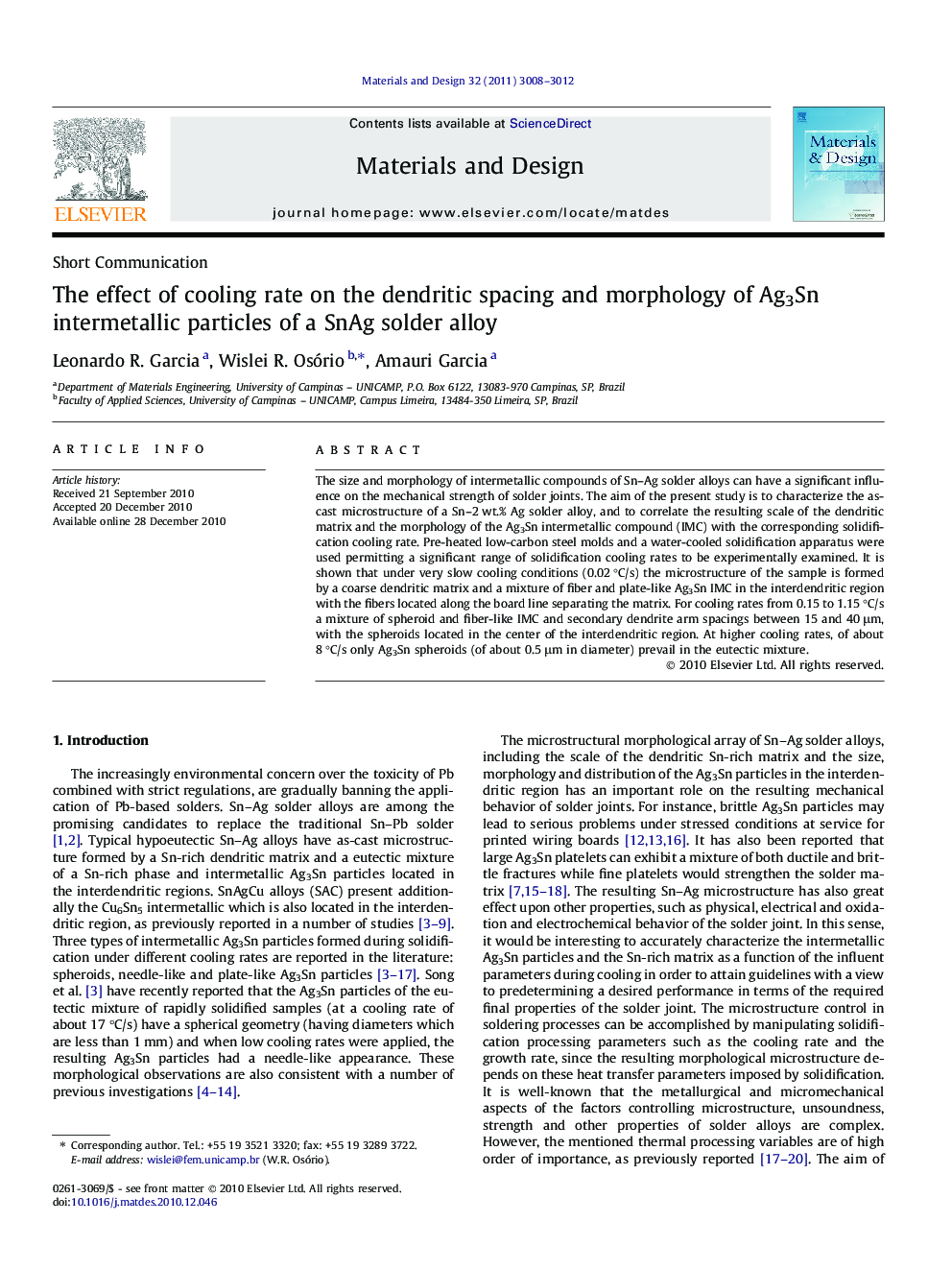| Article ID | Journal | Published Year | Pages | File Type |
|---|---|---|---|---|
| 831315 | Materials & Design (1980-2015) | 2011 | 5 Pages |
The size and morphology of intermetallic compounds of Sn–Ag solder alloys can have a significant influence on the mechanical strength of solder joints. The aim of the present study is to characterize the as-cast microstructure of a Sn–2 wt.% Ag solder alloy, and to correlate the resulting scale of the dendritic matrix and the morphology of the Ag3Sn intermetallic compound (IMC) with the corresponding solidification cooling rate. Pre-heated low-carbon steel molds and a water-cooled solidification apparatus were used permitting a significant range of solidification cooling rates to be experimentally examined. It is shown that under very slow cooling conditions (0.02 °C/s) the microstructure of the sample is formed by a coarse dendritic matrix and a mixture of fiber and plate-like Ag3Sn IMC in the interdendritic region with the fibers located along the board line separating the matrix. For cooling rates from 0.15 to 1.15 °C/s a mixture of spheroid and fiber-like IMC and secondary dendrite arm spacings between 15 and 40 μm, with the spheroids located in the center of the interdendritic region. At higher cooling rates, of about 8 °C/s only Ag3Sn spheroids (of about 0.5 μm in diameter) prevail in the eutectic mixture.
Research highlights► 3D characterization of the morphology of Ag3Sn by an over-etching technique. ► Ag3Sn spheroids are associated with fine dendrite spacings, λ2, of Sn-rich phase. ► A mixture of Ag3Sn (spheroids + fiber-like) is associated with λ2 from 10 to 45 μm. ► A mixture of Ag3Sn (fibers + plate-like) is associated with λ2 of about 100 ± 15 μm. ► Pb-free solder manufacturers can control the microstructure by the cooling rate.
